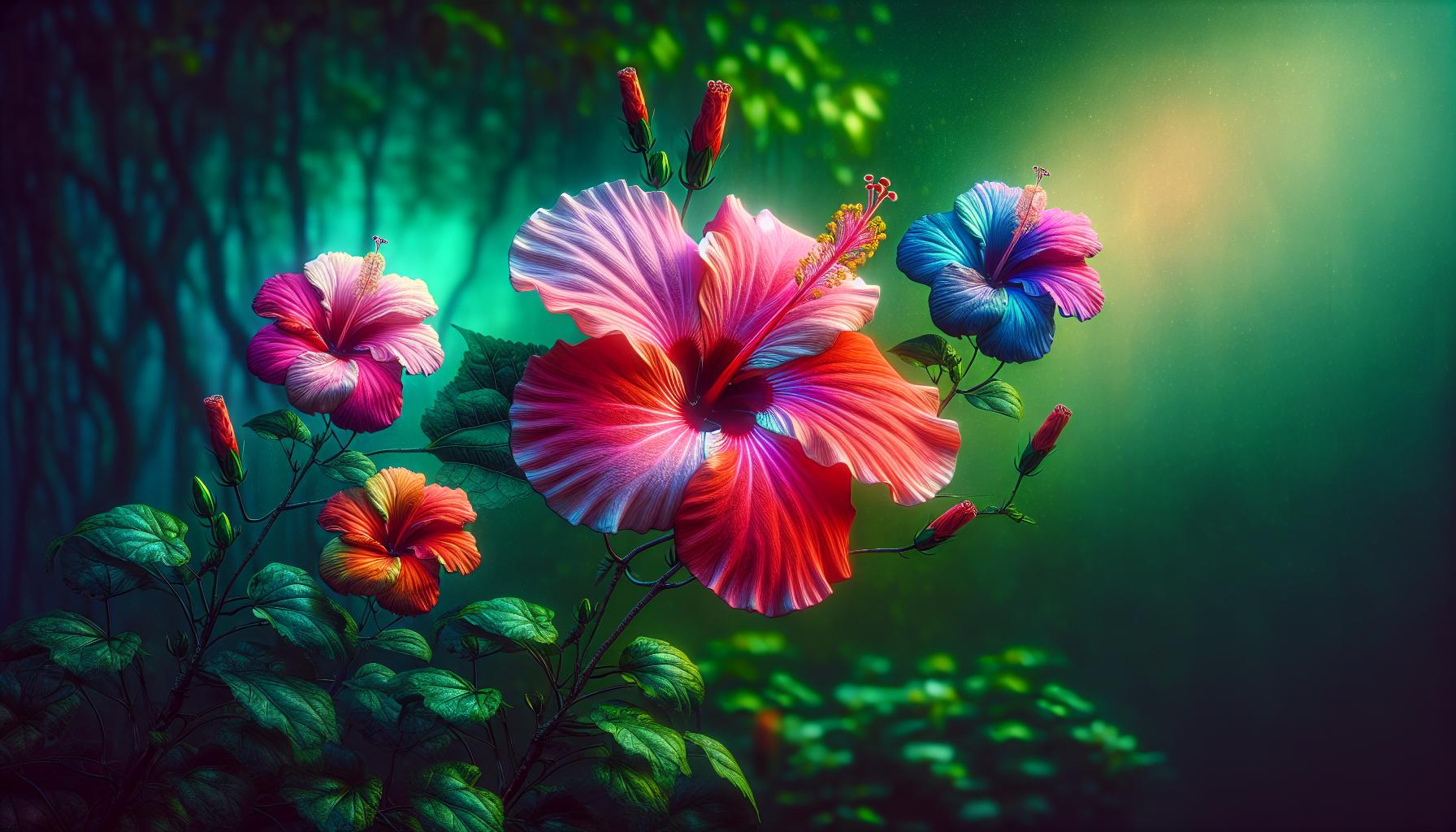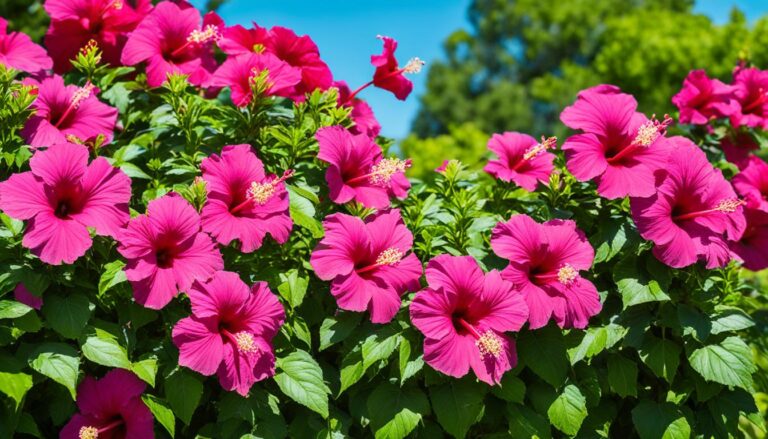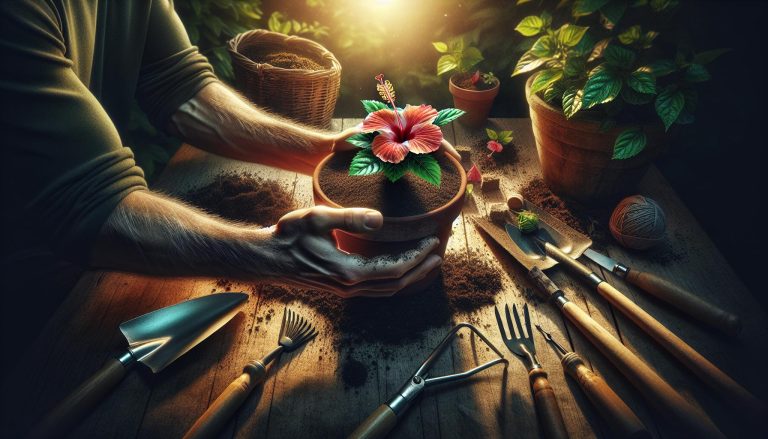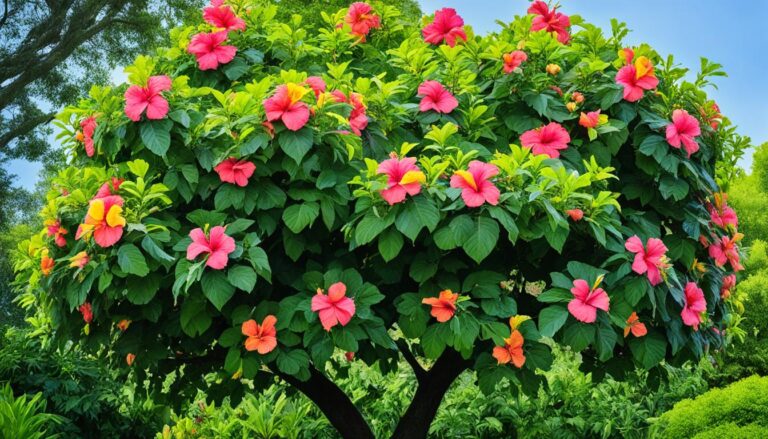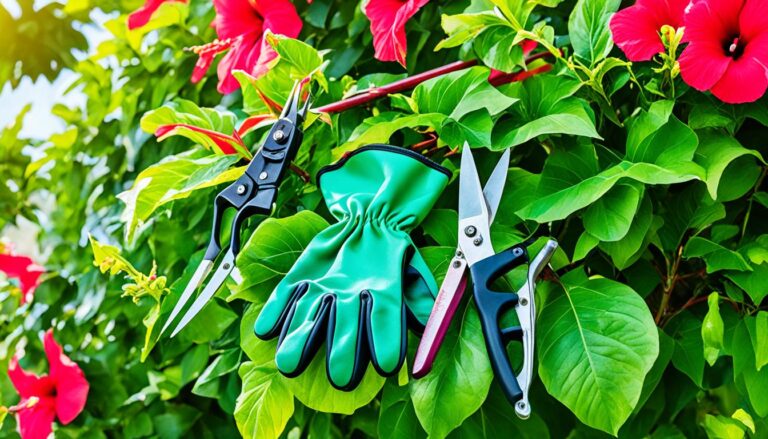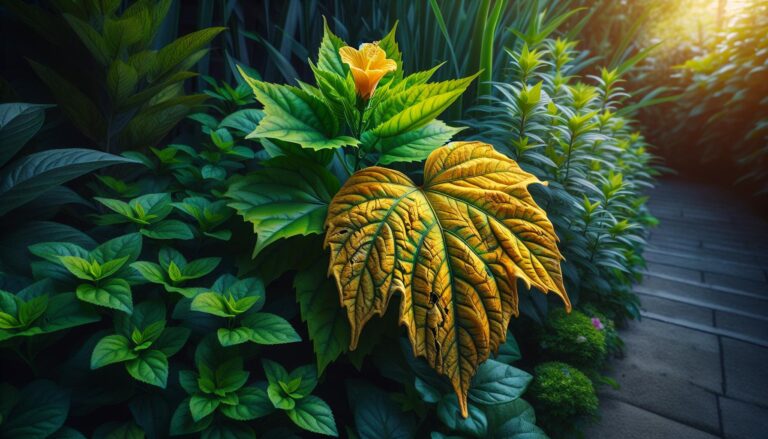Hibiscus Spiritual Meaning: Unveiling the Flower’s Sacred Symbolism
Have you ever wondered about the deeper meaning behind the vibrant hibiscus flower? As a long-time enthusiast of floral symbolism, I’ve discovered that this tropical beauty holds much more than meets the eye.
The hibiscus isn’t just a pretty face in the garden; it’s steeped in spiritual significance across various cultures. From ancient civilizations to modern-day practices, this flower has been revered for its powerful symbolism. But what exactly does the hibiscus represent in the spiritual realm? And how can understanding its meaning enrich our lives?
In this article, I’ll delve into the fascinating world of hibiscus spiritual meaning, exploring its symbolism, cultural significance, and how you can harness its energy in your own spiritual practice.
The Symbolism of Hibiscus in Various Cultures
The hibiscus flower holds deep symbolic meaning across diverse cultures worldwide. Its vibrant petals and alluring form have inspired spiritual traditions, myths, and rituals for centuries. Let’s explore the hibiscus’s significance in three distinct cultural contexts.
Ancient Egyptian Beliefs
Ancient Egyptians revered the hibiscus for its connection to Isis, the goddess of life and motherhood. They believed the flower embodied:
- Feminine power
- Fertility
- Love and passion
Hibiscus tea, known as karkade, was a prized offering in religious ceremonies. The Egyptians used it to:
- Honor deceased pharaohs
- Invoke divine protection
- Promote vitality and longevity
Hawaiian Traditions
In Hawaiian culture, the hibiscus (known as “pua aloalo”) holds a special place as the state flower. It symbolizes:
- Beauty and delicacy
- Royalty and power
- Welcome and hospitality
Hawaiians wear hibiscus flowers behind their ears to indicate relationship status:
| Ear Position | Meaning |
|---|---|
| Left ear | Single |
| Right ear | Taken |
The flower is also used in lei making, hula performances, and traditional medicine.
Hindu Spiritual Significance
In Hinduism, the red hibiscus is sacred to Goddess Kali and Lord Ganesha. It represents:
- Divine energy (Shakti)
- Spiritual awakening
- Destruction of ego
Devotees offer hibiscus flowers during puja (worship) to:
- Seek blessings
- Remove obstacles
- Gain spiritual insight
The flower’s five petals are associated with the five elements: earth, water, fire, air, and ether.
Hibiscus in Religious Practices

Hibiscus flowers play a significant role in various religious traditions worldwide. Their vibrant blooms and symbolic meanings make them integral to many spiritual practices and rituals.
Offerings and Rituals
In Hinduism, red hibiscus flowers are essential offerings to deities like Goddess Kali and Lord Ganesha. Devotees present these blooms during puja ceremonies to seek blessings and remove obstacles. The flower’s five petals represent the five elements: earth, water, fire, air, and ether.
In some African traditional religions, hibiscus tea is used in purification rituals. The drink is believed to cleanse the body and spirit, preparing worshippers for sacred ceremonies. I’ve learned that some practitioners also use hibiscus in divination practices, interpreting the flower’s appearance or behavior as signs from the spiritual realm.
Decorative Use in Temples
Hibiscus flowers are widely used to adorn temples and sacred spaces across various cultures. In Hawaiian temples, leis made from hibiscus blossoms are draped over statues of deities as a sign of respect and devotion. The vibrant colors of these garlands create a visually stunning atmosphere that enhances the spiritual experience.
In Buddhist temples, particularly in Southeast Asia, hibiscus flowers are often placed on altars as offerings. Their bright hues symbolize the transient nature of life and the importance of living in the present moment. The flowers’ short-lived blooms serve as a reminder of impermanence, a key concept in Buddhist philosophy.
Many Hindu temples feature hibiscus plants in their gardens, providing a constant supply of fresh flowers for daily rituals. The presence of these plants is believed to purify the surrounding area and attract positive energy. During festivals, temple decorators create intricate patterns and designs using hibiscus petals, transforming the sacred space into a breathtaking display of devotion.
Colors of Hibiscus and Their Spiritual Meanings
Hibiscus flowers come in various colors, each with its own spiritual significance. These vibrant blooms carry deep meanings across cultures and belief systems. Let’s explore the spiritual interpretations of different hibiscus colors.
Red Hibiscus Symbolism
Red hibiscus flowers symbolize passion, love, and intense emotions. In Hindu traditions, they’re associated with Kali, the goddess of transformation. I’ve seen red hibiscus used in rituals to invoke:
- Courage and strength
- Romantic love and desire
- Protection from negative energies
The bold red petals represent the life force and vitality. Many gardeners plant red hibiscus to attract positive energy and boost confidence in their surroundings.
White Hibiscus Significance
White hibiscus flowers embody purity, peace, and spiritual enlightenment. They’re often used in:
- Meditation practices
- Cleansing rituals
- Offerings for peace and harmony
The pristine white petals symbolize:
| Spiritual Aspect | Meaning |
|---|---|
| Clarity | Clear thoughts and intentions |
| Innocence | Purity of spirit |
| New beginnings | Fresh starts and renewal |
White hibiscus in gardens creates a serene atmosphere, perfect for reflection and spiritual growth.
Yellow Hibiscus Interpretation
Yellow hibiscus flowers represent joy, friendship, and intellectual pursuits. They’re associated with:
- Solar energy and light
- Wisdom and knowledge
- Positive outlook on life
In some cultures, yellow hibiscus signifies:
- Good fortune
- Healing properties
- Enhanced communication
Planting yellow hibiscus in your garden can attract positive energy and promote mental clarity. It’s a cheerful addition that brightens both your space and spirit.
Hibiscus in Feng Shui and Energy Work
Hibiscus flowers play a significant role in Feng Shui and energy work, bringing positive chi and vibrant energy to spaces. Here’s how these beautiful blooms are used:
Placement for Positive Energy
In Feng Shui, hibiscus plants are strategically placed to enhance specific areas of life:
- Southeast: Boost wealth and abundance
- South: Increase fame and recognition
- Southwest: Improve love and relationships
Placing hibiscus in these areas of your home or office can attract the desired energy and promote balance.
Color Significance
Different hibiscus colors carry unique energetic properties:
| Color | Energy |
|---|---|
| Red | Passion, vitality, strength |
| Pink | Love, compassion, nurturing |
| White | Purity, clarity, spiritual growth |
| Yellow | Wisdom, confidence, personal power |
Choose the color that aligns with your intention for maximum impact.
Energy Cleansing
Hibiscus flowers are used in energy cleansing rituals:
- Burn dried hibiscus petals as incense
- Add fresh petals to bath water for a cleansing soak
- Create a hibiscus flower essence for aura cleansing
These practices help remove stagnant energy and promote a fresh, vibrant atmosphere.
Chakra Alignment
Hibiscus corresponds to specific chakras:
- Red hibiscus: Root chakra (grounding)
- Pink hibiscus: Heart chakra (love and compassion)
- White hibiscus: Crown chakra (spiritual connection)
Meditating with the appropriate hibiscus color can help balance and activate these energy centers.
Manifestation Tool
Hibiscus flowers amplify intentions and desires:
- Write your intention on a hibiscus petal
- Place the petal in a special location or bury it in soil
- Visualize your intention manifesting as the flower blooms
This practice harnesses the flower’s powerful energy for personal growth and manifestation.
By incorporating hibiscus into Feng Shui and energy work practices, you can tap into its potent spiritual properties and create harmonious, energetically balanced spaces.
Hibiscus as a Metaphor for Personal Growth
Growing hibiscus mirrors our personal development journey. Like these vibrant flowers, we bloom with patience and care.
Resilience and Adaptability
Hibiscus thrives in diverse conditions, adapting to various climates. This resilience teaches us to flourish amid life’s challenges. I’ve seen hibiscus bounce back from harsh winters, reminding me of our innate strength.
Cycles of Growth and Rest
Hibiscus follows natural cycles of blooming and dormancy. This pattern reflects our own need for periods of intense growth and restful reflection. Embracing these cycles promotes balanced personal development.
Beauty in Imperfection
Each hibiscus flower is unique, with subtle variations in color and form. This diversity celebrates the beauty of imperfection, encouraging self-acceptance and authenticity in our growth journey.
Nurturing Growth
Cultivating hibiscus requires:
- Consistent care
- Proper nutrition
- Regular pruning
- Protection from harsh elements
These needs parallel our own growth requirements:
- Self-care
- Nourishing relationships
- Letting go of what no longer serves us
- Creating supportive environments
Embracing Transformation
Hibiscus flowers open and close daily, symbolizing constant renewal. This transformation reminds us to embrace change and view each day as a fresh start in our personal evolution.
Modern Spiritual Interpretations of Hibiscus
In recent years, the hibiscus flower’s spiritual significance has evolved, blending traditional beliefs with contemporary interpretations. I’ve observed a growing interest in the flower’s symbolic power among modern spiritual practitioners.
Mindfulness and Meditation
Hibiscus flowers serve as powerful tools for mindfulness practices:
- Visual focus: Their vibrant colors aid concentration during meditation
- Breath awareness: The flower’s scent enhances mindful breathing exercises
- Present moment: Observing the flower’s daily blooming cycle encourages living in the now
Emotional Healing
Modern healers use hibiscus in emotional therapy:
- Color therapy: Red hibiscus for grounding, pink for self-love, white for purity
- Flower essences: Hibiscus essences promote emotional balance and self-acceptance
- Aromatherapy: Hibiscus scents calm anxiety and boost mood
Manifestation Rituals
Hibiscus plays a role in contemporary manifestation practices:
- Setting intentions: Writing goals on hibiscus petals before releasing them
- Visualization: Using the flower’s image as a focus for manifesting desires
- Affirmations: Incorporating hibiscus symbolism in daily positive statements
Spiritual Connection
Modern spiritualists view hibiscus as a conduit for higher consciousness:
- Divine feminine: Representing the nurturing aspect of the universe
- Nature spirits: Attracting benevolent energies to sacred spaces
- Interdimensional communication: Facilitating connection with spiritual realms
Personal Growth Symbolism
The hibiscus flower symbolizes various aspects of personal development:
| Aspect | Symbolism |
|---|---|
| Resilience | Ability to thrive in diverse conditions |
| Transformation | Daily opening and closing of blooms |
| Beauty | Embracing one’s unique qualities |
| Adaptability | Flourishing in different environments |
By incorporating hibiscus into modern spiritual practices, individuals tap into its ancient wisdom while creating new, personalized interpretations. This fusion of old and new perspectives enriches the flower’s spiritual significance in contemporary contexts.
Conclusion
The hibiscus flower’s spiritual meaning transcends time and culture offering a rich tapestry of symbolism and significance. From ancient rituals to modern practices it continues to inspire and guide seekers on their spiritual journeys. Whether you’re drawn to its vibrant colors powerful symbolism or healing properties the hibiscus can be a valuable ally in your personal growth and spiritual development. By embracing the wisdom of this beautiful flower we can tap into its transformative energy and cultivate resilience beauty and adaptability in our lives. Let the hibiscus be your guide as you explore the depths of your spiritual path and unlock new dimensions of self-discovery.

